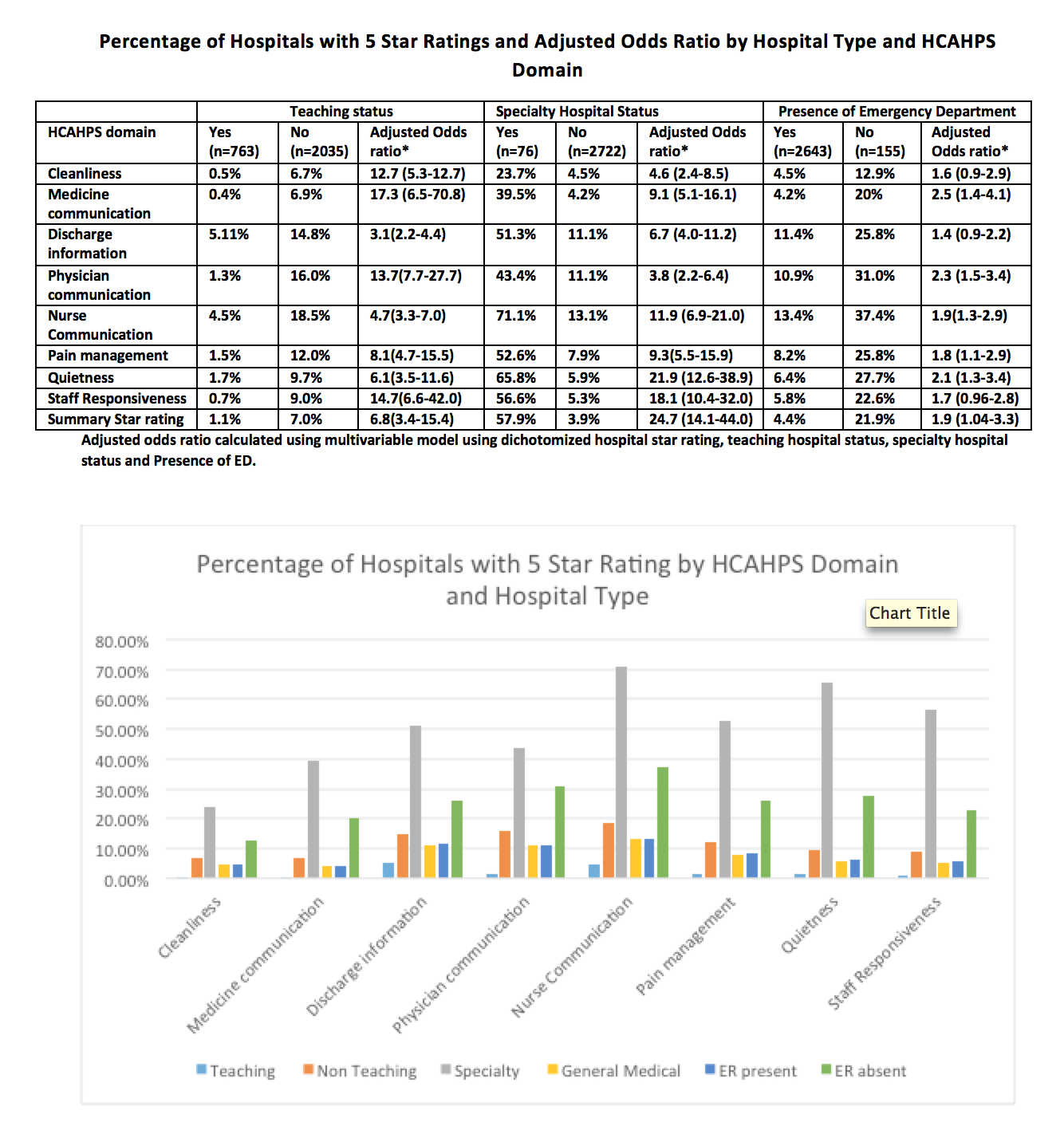Background: In April 2015, CMS released first ever star ratings on Hospital Compare related to patient satisfaction. Based on the HCAHPS survey scores, hospitals received scores between 1 and 5 on 12 domains, including a summary star rating for the hospital. Critics contend that star ratings may be a gross over simplification and misleading. Elite academic centers are trying to comprehend their sub-par rating despite excellence in other areas. We analyzed the relationship between hospital service structure and HCAHPS star rating.
Methods: National HCAHPS patient satisfaction star ratings for calendar year 2014 were downloaded from CMS’s website. Teaching hospitals were identified using CMS 2013 Open Payment teaching hospital listings. Hospitals providing care limited to a narrow set of medical and surgical subspecialties and were identified as specialty hospitals. Distribution of 5 star rated hospitals by various HCAHPS domain amongst each hospital type and across various states were calculated. Multivariable regression models using HCAHPS domain 5 star ratings, specialty hospital status, teaching hospital status and presence of an ED was used to calculate adjusted odds ratios (aOR).
Results: In this national sample of 2798 hospitals, 27.3% were teaching hospitals, 12.9% of hospitals lacked an ED and 3% were specialty hospitals. While 5% of all the hospitals received a “5 Star” summary rating, only 1% (0.5%-2%) of teaching hospitals received this rating. In contrast, 58.9% (46.7%-68.4%) of specialty hospitals receiving this rating. In fact only 4 (0.5%, 0.2%-1.4%) teaching general medical hospitals with emergency services received 5 star summary rating in the entire national sample. Specialty Hospital status had 24.7(14.1-44.0) aOR for receiving a 5 star summary status and 21.9 (12.6-38.9) aOR for receiving 5 star on Quietness when compared to general medical hospital. Non-teaching hospital have a 17.3 (6.5-70.8) aOR for receiving a 5 star on medicine communication and 14.7 (6.6-42.0) aOR for receiving 5 stars on staff responsiveness, when compared with teaching hospitals.
Conclusions: Delivery of care is a complex operational task. Presence of additional complexity related to presence of trainees in a teaching hospital, responsibility of caring for sicker and likely poorer patients coming through the ED and a broader set of ailments in a general medical hospital are associated with lower star ratings. At least partially because of the broader mission of the major academic medical centers, they may be incorrectly viewed as providing second-rate service. 
